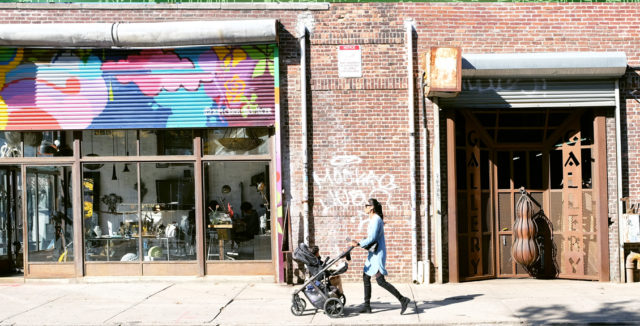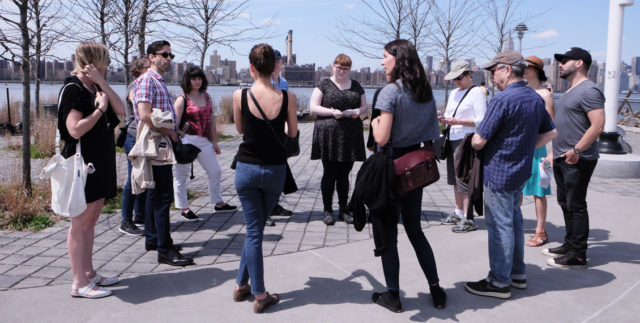
What Makes a Space Public?
December 21, 2015 — Blog
What makes a space public? Is it ownership, access, design, the public, or use that define it? Why is this important?
Our global cities are increasingly becoming spaces of greater inequality and segregation by income. In such cities, New York being one of them, where people live in fairly economically or ethnically homogenous neighbourhoods, it is essential for truly public spaces to exist in order to allow visibility and discourse across existing boundaries. A city without this access means that privileged groups, lacking exposure to difference, are less able to reflect on their own positionings and question the processes and policies that lock in and reproduce disparities. As a result, with the increasing privatization of urban environments, questions around public space are garnering attention and becoming increasingly significant1.

To better interrogate these issues, I would like to zoom into a particular neighborhood in New York, Williamsburg, Brooklyn. Williamsburg serves as a vibrant case study of difference and the role that public space has in our urban environments. As a newly settled resident of the neighborhood, I began to explore these issues with my colleague Larissa Begault. We conducted a year long ethnographic study of the area and hosted a series of walking workshops that were designed as a tool for prototyping public engagement in issues around urban development and access. The goal here was to promote the right to design a future vision for shared public space and advocate for greater public participation in decision-making around neighborhood development. The most encouraging outcome of these workshop series’ was the general eagerness of the varied publics that participated to be actively engaged in such issues. The main imperative now, is to ensure that the public is equipped with the knowledge to participate in existing openings for public action as well as to work on redesigning existing platforms of engagement to make them more transparent, inclusive, and binding.

To provide some background on the most recent iterations of the neighborhood, one of Williamsburg’s most popular tales is that of its reemergence, symbolized by its newest wave of bars, restaurants, hotels and luxury towers. This, represents not simply a mere upscaling of a less remarkable past, but rather that of a burgeoning area, born and reimagined, yet containing the most desirable aesthetic elements of its past. Such fragments include ethnic restaurants, shops and bodegas, gritty industrial remnants and unmanicured streetscapes. It has become part of the global kaleidoscope of “it” neighborhoods. Williamsburg represents an old industrial neighborhood that has experienced a renewal, is regarded as “the epicenter of the Brooklyn renaissance” by public officials and a rebirth, as seen through its hyper developed waterfront2.
What is meant when a neighborhood is reborn, revitalized, regenerated, or discovered? Who are the actors behind such processes? And who is denied the glitz and glamour of the opening night buzz?
Williamsburg has approximately a square footage of green space to person ratio that is one fifth of the citywide average. Thus, it is a neighborhood that faces a significant shortage of public space. With new waves of people, the unfettered upscaling of the area and perpetual displacement this becomes an increasingly significant issue. Here, we need to return to the question of what makes a space public. How can we begin to expand how we think about the new spaces we create, and how can we use, regulate and program existing spaces in a way that encourages difference and the cohabitation of multiple publics?

Increasingly the City and State that owns some of the public spaces in Williamsburg, such as McCarren Park and East River State Park, are partnering with private companies to develop and manage the programming of these spaces. These public-private partnerships, though economically attractive, come with their own costs. It is important to consider who the target public of such programming is and what kind of uses are promoted. In East River State Park, consumption is becoming an inherent part of the experience and use with popular programming such as Smorgasburg and the Brooklyn Flea, and in McCarren Park, passive spectatorship with an outdoor cinema and concert series. Such public space programming is not inherently good or bad, it attracts huge numbers of people from all over New York and even the world. However, what does require investigation is how difference is able to exist in such spaces and how access, beyond merely physical, for less privileged groups in the neighborhood can be achieved and maintained. Public spaces hold the potential for generating new civic imaginaries that span across social, economic and generational boundaries. They are productive spaces that have a significant role to play in how we envision the future of our cities and ultimately how we go about creating it.